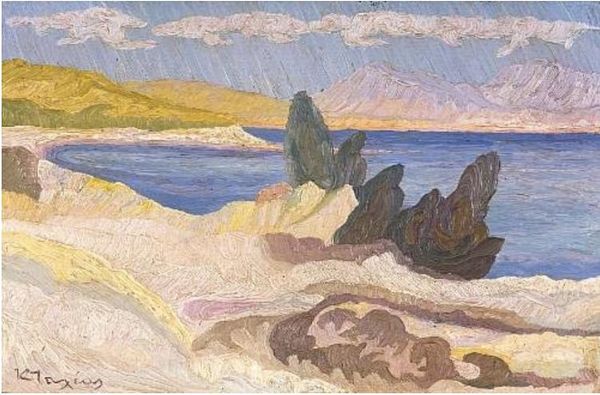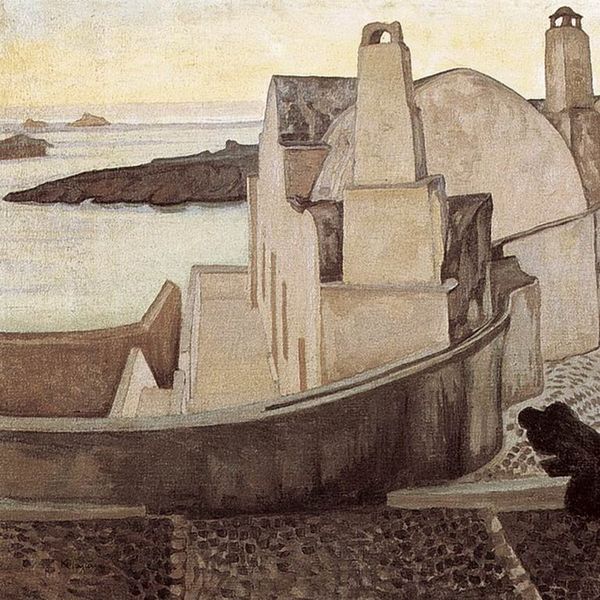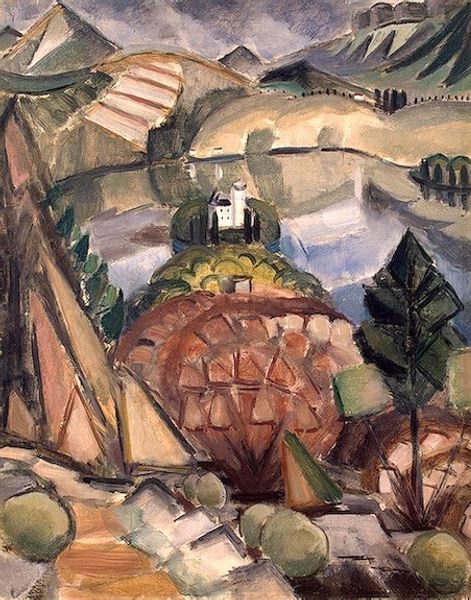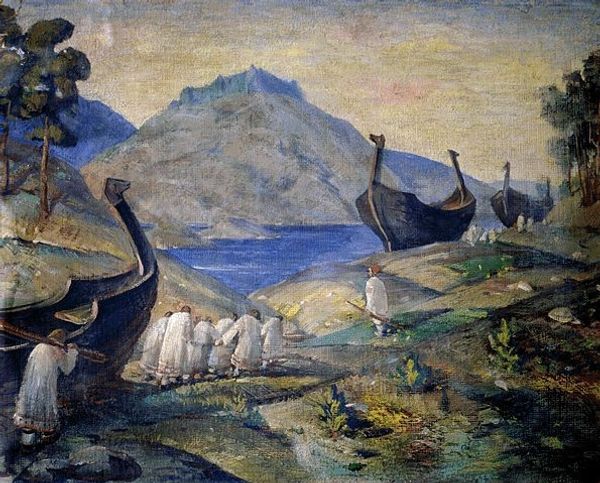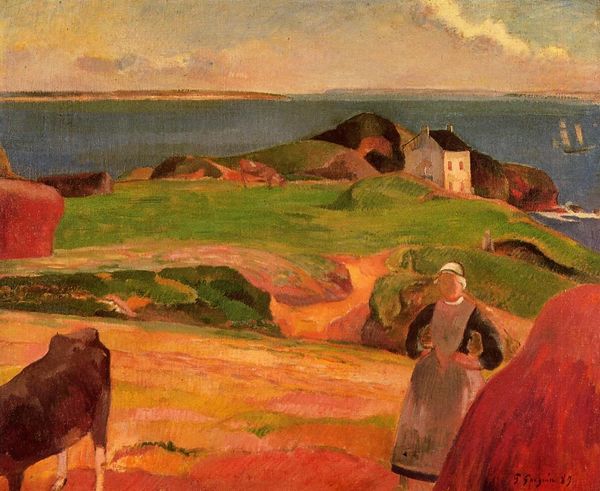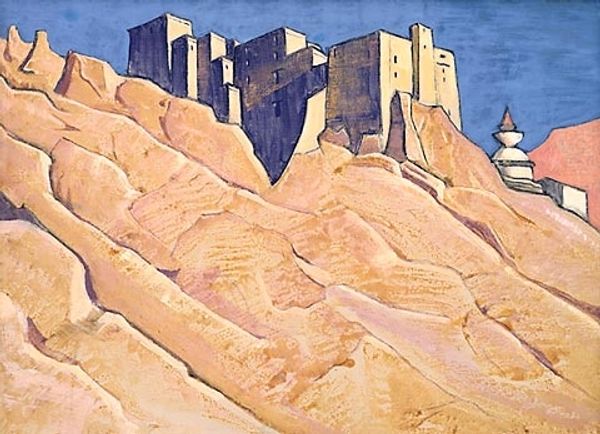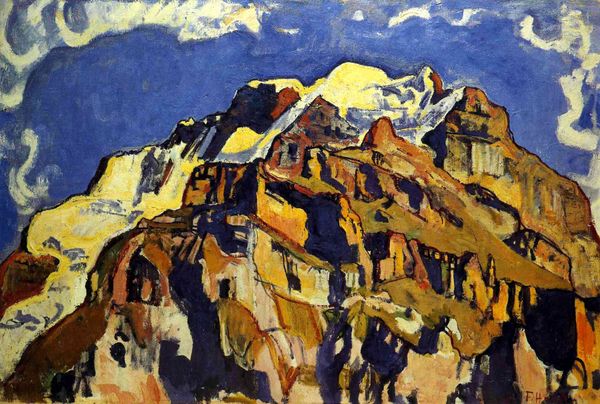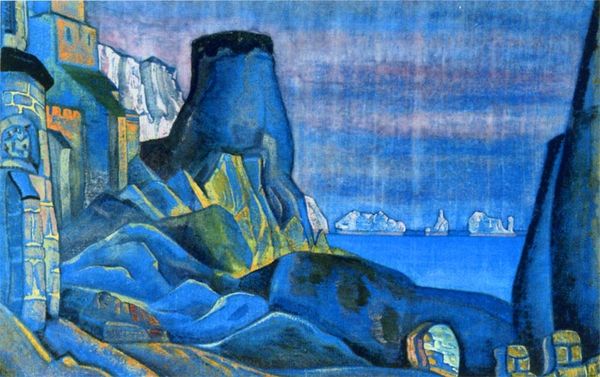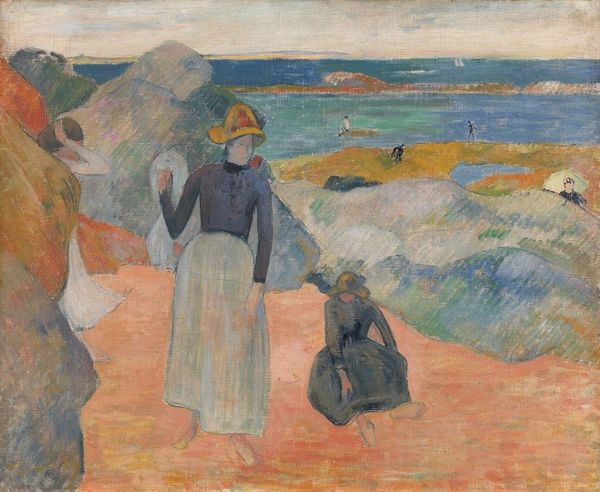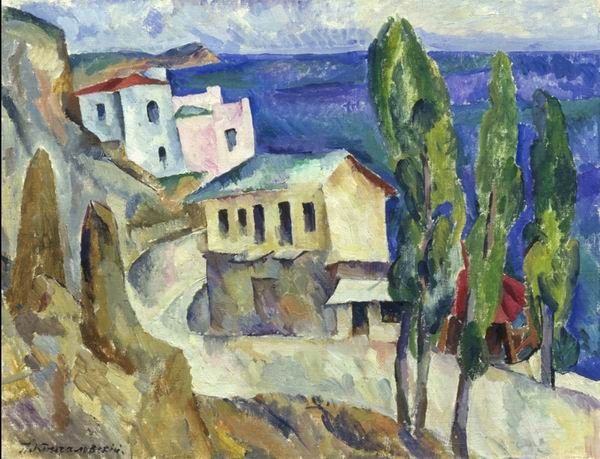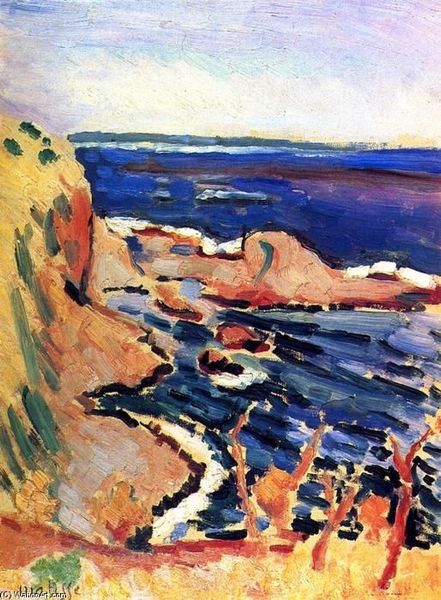
Dimensions: 94 x 124.5 cm
Copyright: Public domain
Curator: My first thought looking at this... it’s drenched in melancholic stillness, isn’t it? Editor: It is! We are looking at Nicholas Roerich's "Holy Lake," an oil painting created in 1917. The piece lives here with us at the Zimmerli Art Museum. Immediately, I notice how the sharp angles and cool blues of the landscape, offset by the earthy tones in the stone, evoke both solidity and an otherworldly presence. Curator: Exactly! The jagged rocks feel almost like crystal shards. And that figure with the cloak – is it a monk? The way they’re positioned, sweeping… it gives me the impression they're sweeping away worldly cares or something similarly intangible. Or maybe they’re just, you know, tidying up. Editor: Perhaps both! Roerich's work is deeply influenced by the Theosophical Society, with this commitment to exploring the intersections of religion, philosophy, and science. He seeks underlying spiritual connections. That figure, caught in a mundane task against the backdrop of nature's grandeur, presents a sort of allegorical moment. It could imply the merging of the earthly and the spiritual, reflecting the belief that divinity exists within the everyday. Curator: That makes perfect sense. And the color palette… those faded golds and indigos. There's a muted quality, but then the brushstrokes are quite vibrant up close. They make the light shimmer off the rocks, almost as if they hold their own internal glow. I sense both decay and something eternal. Editor: Roerich often integrated social and political commentary into his artistic expressions. 1917 was a pivotal year, marked by revolution and upheaval in Russia. The artist’s choice to depict such a serene landscape during such turbulent times can be interpreted as escapism. Curator: I can't help but wonder about the choice of title, "Holy Lake.” It imbues the whole scene with a reverence – elevating the mundane, like we said earlier. But do you think that makes it more accessible or more remote? It's beautiful, definitely. Yet there's something aloof about it. Editor: It’s a tightrope walk for sure. But Roerich dares us to feel the sublime in the ordinary. What lingers most for me is how the themes presented continue resonating across a century. This painting serves as a reminder of our enduring need for spiritual and emotional anchor amidst chaos. Curator: And I am left pondering the silence in this artwork. Thanks for illuminating that with me.
Comments
No comments
Be the first to comment and join the conversation on the ultimate creative platform.
